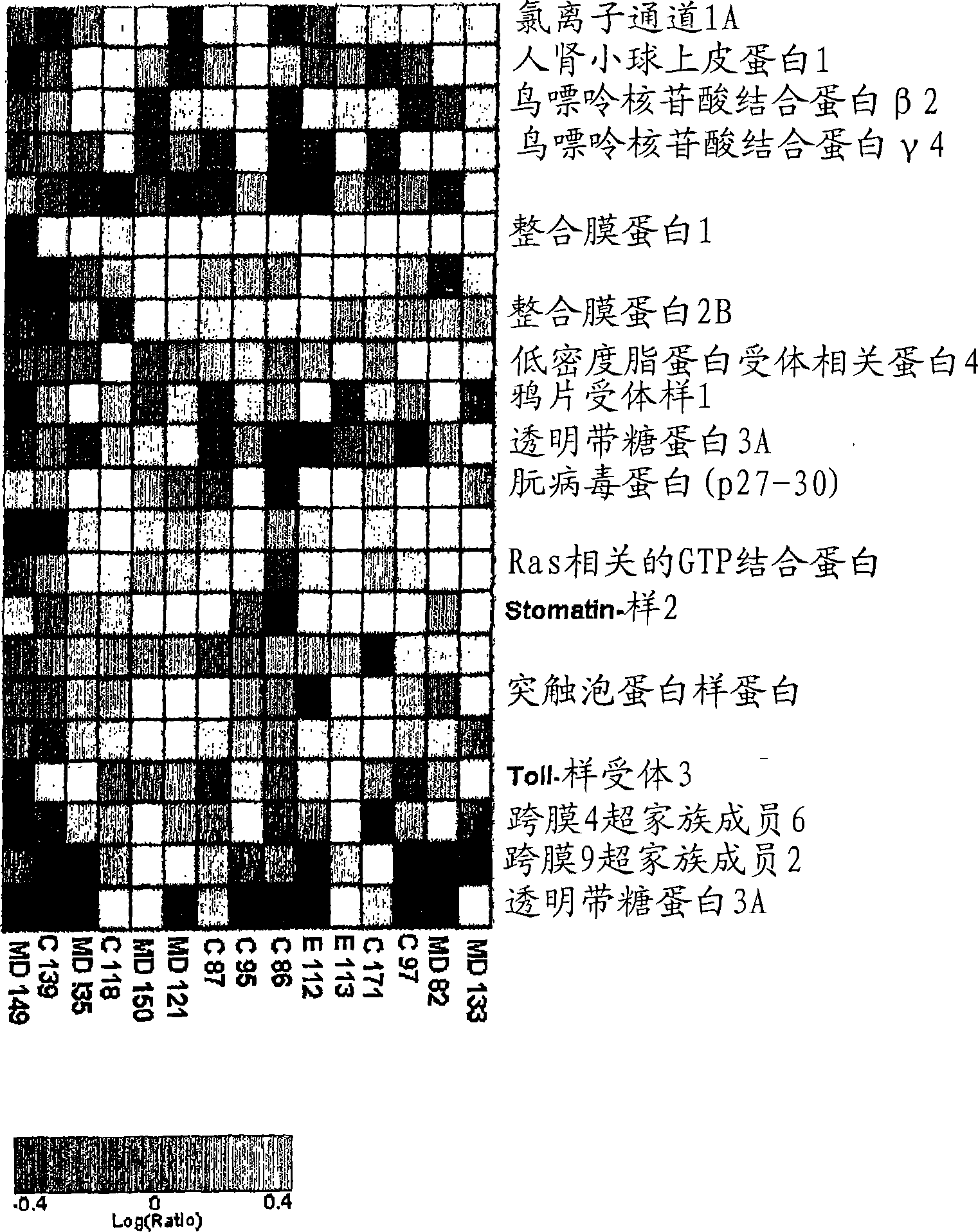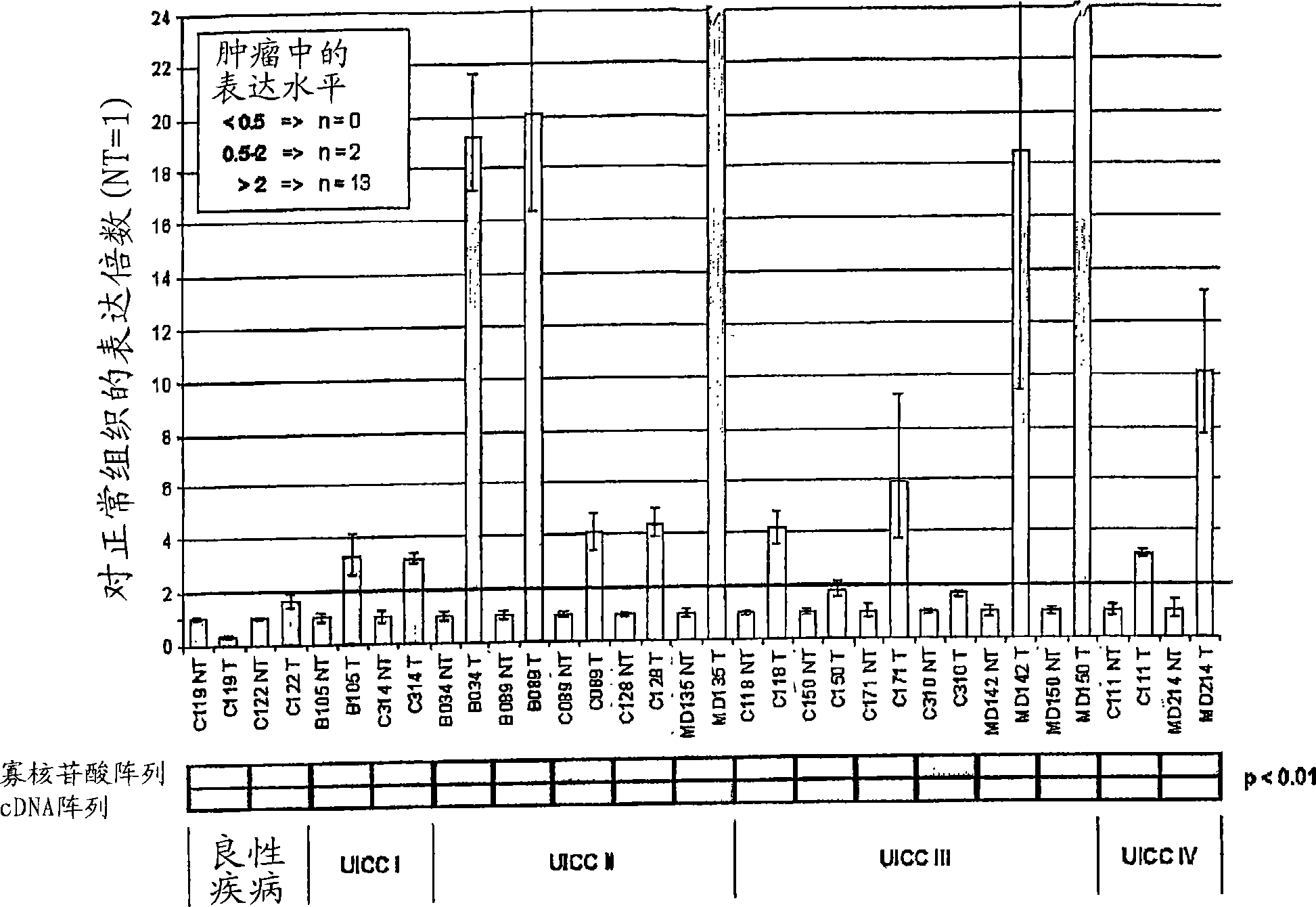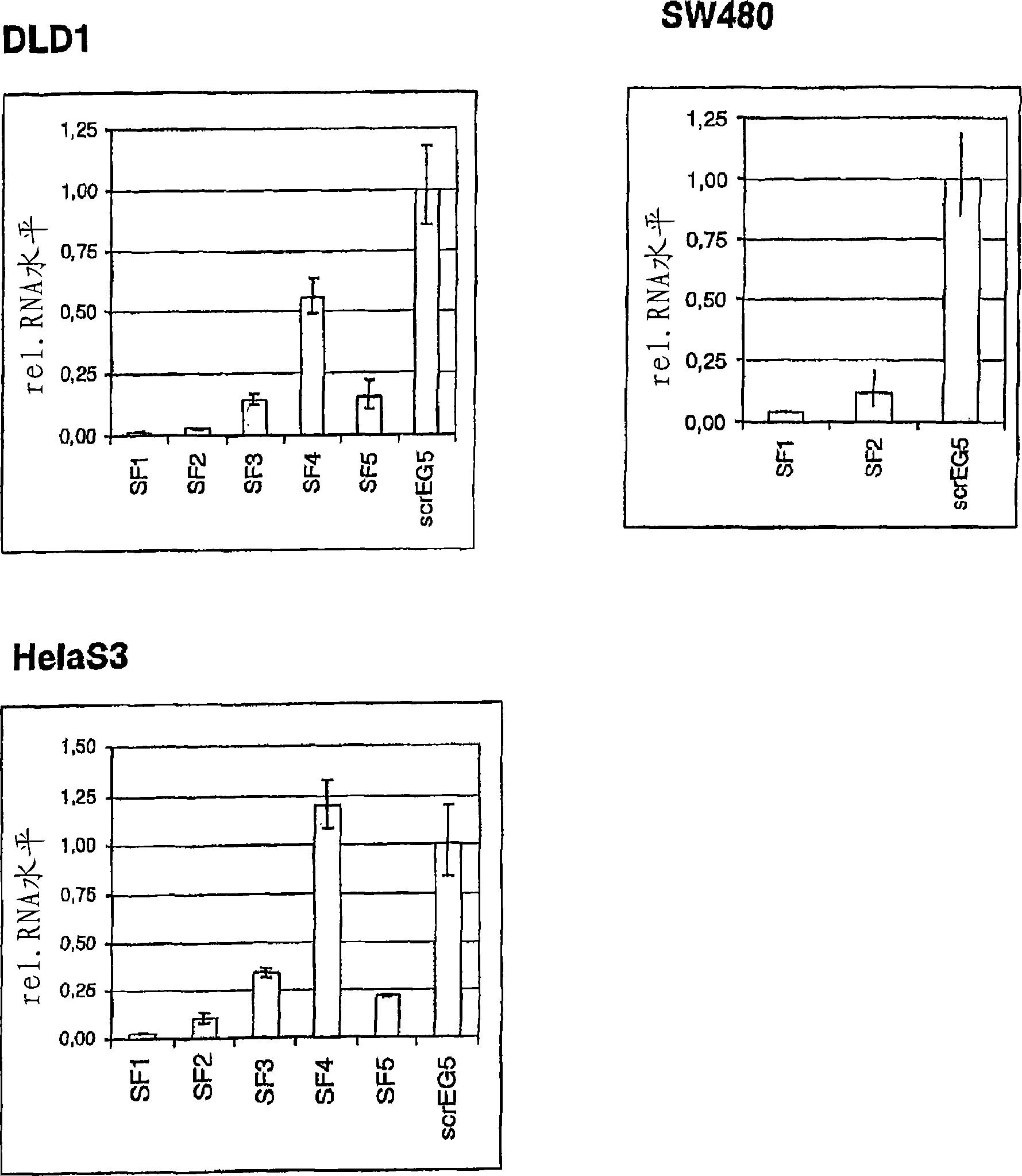Differentially expressed tumour-specific polypeptides for use in the diagnosis and treatment of cancer
A cancer treatment and therapeutic agent technology, applied in the field of differentially expressed tumor-specific polypeptides for cancer diagnosis and treatment, can solve the problems of expensive, narrow detection application range, and inability to detect other types of cancer
- Summary
- Abstract
- Description
- Claims
- Application Information
AI Technical Summary
Problems solved by technology
Method used
Image
Examples
Embodiment 1
[0163] Example 1. Labeling method for isolating RNA and cDNA from colon tissue
[0164] The identification of disease-specific molecular markers is extremely important for the diagnosis and treatment of various types of steroid-independent cancers, especially those arising from neoplastic transformations of epithelial cells. A prerequisite for the successful identification of molecular-based differences between tumor tissues and those isolated from healthy individuals lies in the comparative transcriptional analysis of differentially regulated genes in epithelial cells isolated from healthy and tumorigenic tissues.
[0165] For this purpose, tissue samples were collected from colon cancer patients at different stages of the disease, together with healthy colon tissue collected from distant sites (sample sets). In Cottbus (Carl-Thiem-Klinikum Cottbus, Chirurgische Klinik, 03048 Cottbus, Germany), Magdeburg (Otto-von-Guericke-Klinik, Leipziger Strasse44, 39120 Magdeburg, Germany...
Embodiment 2
[0170] Example 2. Data Analysis Using Rosetta Resolver (Rosetta Inpharmatics. Kirkland, WA)
[0171]Expression of genes encoding plasma membrane proteins or plasma membrane-associated proteins was studied using the Rosetta Resolver platform (Rosetta Inpharmatics. Kirkland, WA). Using the publicly available LocusLink database (NCBI), the gene names and database identifiers of all extracted genes encoding known plasma membrane proteins or plasma membrane-associated proteins were mapped to their presence on the human-1 cDNA microarray (Agilent Technologies, USA ) on the identified corresponding features. During the study period, 1147 coding sequences of 1480 known plasma membrane proteins or related proteins registered in LocusLink (NCBI) were present on the cDNA microarrays used. These 1147 genes were combined in Bioset within Rosetta Resolver (Agilent Technologies, USA) and their expression was analyzed in 15 colon samples (tumor and healthy samples). Protein-coding genes of ...
Embodiment 3
[0172] Example 3. Detection of Differential Gene Expression in Patients for Diagnostic Purposes
[0173] The expression pattern of immunogenic membrane proteins of the proteins of the invention can be analyzed by real-time quantitative RT (reverse transcription)-PCR (polymerase chain reaction) (ref). Briefly, total RNA from a minimum of 20 tumor and non-tumor pairs (isolated epithelial cells) and 3-4 different cell lines (controls for within-assay variation) of the tissue of interest were reversed in triplicate using random hexamers. Transcription, followed by parallel amplification by real-time quantitative PCR in the presence of SYBR Green I using primer pairs specific for the sequence of interest. These primers were designed using Applied Biosystems' PrimerExpress 2.0 software; they should span introns to avoid detection of contaminating DNA and should not be complementary to any other sequence in the human genome as detected by BLAST searches. Data were normalized using 2...
PUM
 Login to View More
Login to View More Abstract
Description
Claims
Application Information
 Login to View More
Login to View More - R&D
- Intellectual Property
- Life Sciences
- Materials
- Tech Scout
- Unparalleled Data Quality
- Higher Quality Content
- 60% Fewer Hallucinations
Browse by: Latest US Patents, China's latest patents, Technical Efficacy Thesaurus, Application Domain, Technology Topic, Popular Technical Reports.
© 2025 PatSnap. All rights reserved.Legal|Privacy policy|Modern Slavery Act Transparency Statement|Sitemap|About US| Contact US: help@patsnap.com



